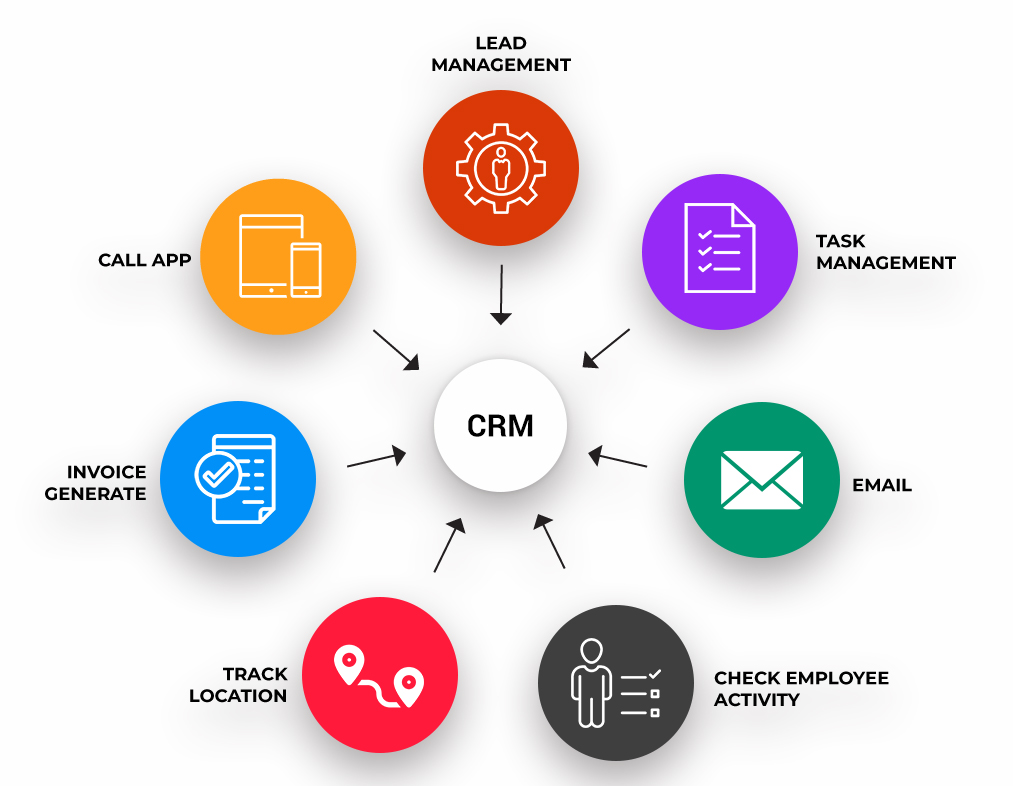Here are more details about each of the 20 features related to CRM system administration:
- User Management: This feature allows administrators to create user accounts, assign roles and permissions, and manage user access to different modules and functionalities within the CRM system. It ensures that users have appropriate access levels and can perform their assigned tasks.
- Configuration Settings: CRM administrators can customize various system settings and preferences, such as language settings, time zones, default values, system notifications, and user interface customization. These settings help tailor the CRM system to the organization’s specific needs.
- Data Management: This feature enables administrators to import and export data from external sources, maintain data integrity through data cleansing and deduplication processes, and ensure data consistency and accuracy within the CRM system.
- Module Customization: CRM systems often provide customization options to add, modify, or remove fields and modules based on specific business requirements. Administrators can tailor the system to capture and display relevant information specific to their organization’s processes and workflows.
- Workflow Automation: Administrators can configure automated processes and workflows within the CRM system. These workflows can include automated task assignments, email notifications, approvals, and other actions triggered by specific events or conditions.
- Email Integration: CRM systems often offer email integration capabilities, allowing administrators to configure email accounts, set up email templates for standardized communication, and create email campaigns for marketing purposes. Integration with email systems enables seamless communication and tracking within the CRM.
- Reporting and Analytics: CRM systems provide reporting and analytics features that allow administrators to generate various reports and analyze data for insights. Administrators can create custom reports, track key performance indicators (KPIs), and gain valuable business intelligence to support decision-making.
- Security and Access Control: Administrators are responsible for managing user roles, permissions, and data security settings within the CRM system. They can define which users have access to specific modules, fields, or sensitive data, ensuring data privacy and compliance with security regulations.
- Integration Management: CRM systems often support integration with external systems through APIs (Application Programming Interfaces). Administrators can configure API connections and manage integrations with other applications, such as ERP (Enterprise Resource Planning) systems, marketing automation tools, or customer support platforms.
- Dashboards and Visualizations: Administrators can create customized data visualizations and executive dashboards within the CRM system. These dashboards provide a snapshot of key metrics, allowing users to monitor performance, track goals, and make data-driven decisions.
- Territory Management: This feature allows administrators to define and manage sales territories within the CRM system. They can assign accounts, leads, and opportunities to specific territories, enabling effective sales territory management and targeted sales efforts.
- Lead and Opportunity Management: Administrators can configure lead and opportunity stages, sales processes, and forecasting settings within the CRM system. They define the various stages of the sales cycle, track progress, and analyze the sales pipeline for accurate forecasting and performance evaluation.
- Customer Service Management: Administrators can set up customer support workflows, configure ticketing systems, define service level agreements (SLAs), and manage customer interactions within the CRM system. This feature helps streamline customer service processes and ensure timely issue resolution.
- Marketing Campaign Management: Administrators can create and manage marketing campaigns within the CRM system. They can define target segments, track campaign performance, and analyze the effectiveness of marketing initiatives through campaign metrics and analytics.
- Document and File Management: CRM systems often provide document and file management capabilities. Administrators can store, organize, and share documents and files related to customer interactions, sales processes, or marketing collateral within the CRM system.
- Mobile Access and App Administration: Administrators can configure and manage CRM mobile applications to enable users to access CRM functionalities on mobile devices. They can ensure the security and availability of mobile access, manage user permissions, and monitor mobile app usage.
- Data Backup and Recovery: CRM administrators are responsible for implementing regular data backups and disaster recovery plans to safeguard critical data. They ensure that data is backed up securely and can be restored in case of system failures or data loss.
- System Integration Testing: Administrators perform testing and quality assurance activities to ensure the smooth functioning of system integrations. They verify data exchange, workflows, and data consistency between the CRM system and other integrated applications.
- Customization and Development: Administrators can extend the functionality of the CRM system through custom modules, plugins, or APIs. They may work with developers or use low-code/no-code tools to create customized solutions that meet specific business needs.
- System Maintenance and Upgrades: Administrators manage system updates, patches, and performance optimization to ensure the CRM system remains secure, stable, and up-to-date. They coordinate with vendors, schedule maintenance activities, and monitor system performance for optimal user experience.
These features collectively empower administrators to configure, customize, and manage the CRM system to align with their organization’s unique requirements and drive efficient and effective customer relationship management.
SHARE
